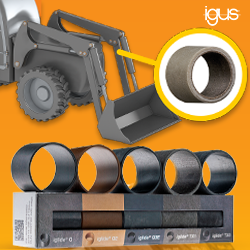MIT's Cheetah Untethered Running And Jumping!
YuMi: ABB's Collaborative Robot
ReWalk Robotics Hopes to Raise $50M in IPO
Dyson 360 Eye
High Speed Bipedal Robot Running Using High Speed Visual Feedback
Beginners Tutorial: Autonomous Robot Control Theory
Unbounded Robotics to Shut Down Due to Issues With Willow Garage Spin-Off Agreement
A Restaurant In China Where All The Food Is Prepared And Served By Robots
Large Scale Visual Recognition Challenge 2014
Rising Colorspace
T100 Underwater Thruster Designed for Marine Robotics
Self-Folding Origami Robot Goes From Flat to Walking in Four Minutes
Hitchbot is Halfway Across its Canadian Journey
Nvidia Jetson TK1 Development Kit
Ino: Command Line Toolkit for Arduino Hardware
Records 1366 to 1380 of 1671
First | Previous | Next | Last
Featured Product

igus - triflex R robot dresspacks
Robotics and Automation - Featured Company

